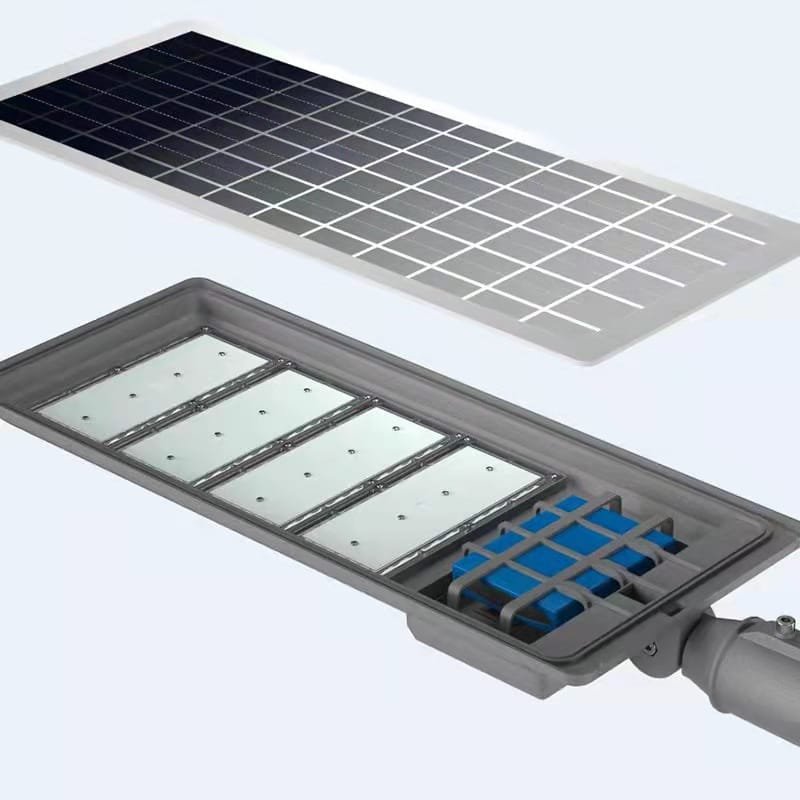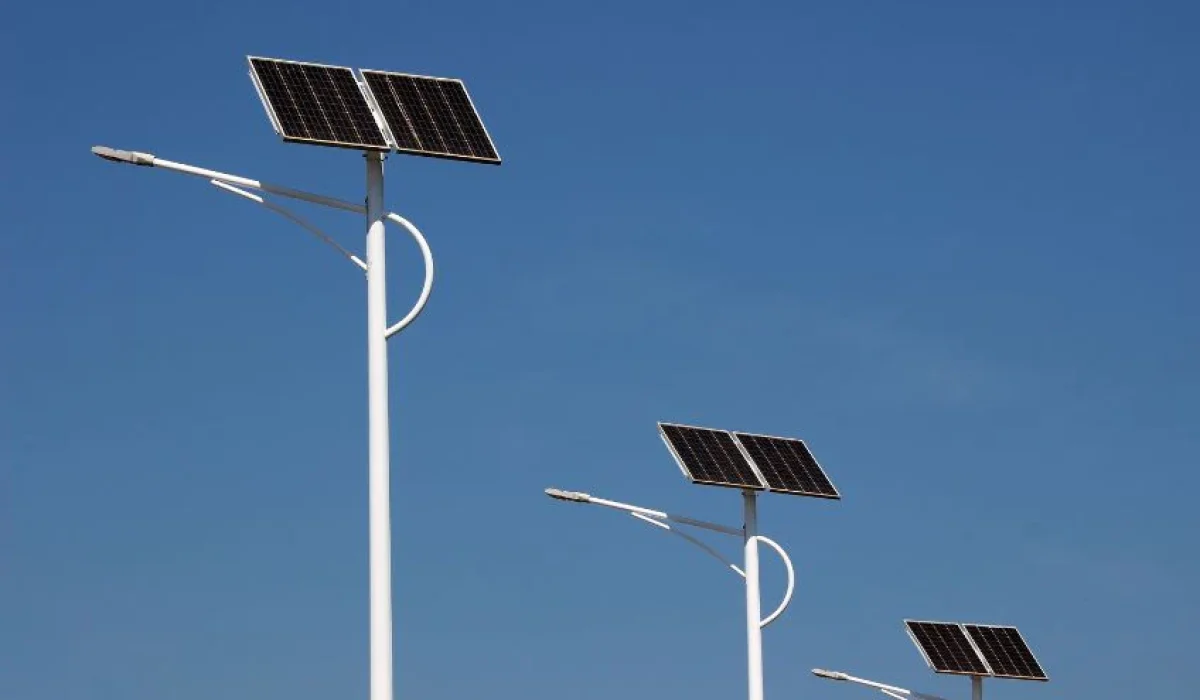Many lights look solid on the outside but fail after a few months. Let's talk about how to avoid that.
A truly durable all-in-one solar street light depends on what's inside—battery quality, materials, and smart controls make all the difference.
Too many products focus on sleek looks but skip the core components. In this article, I’ll show you exactly how to judge if a solar light is built to last, saving you from costly mistakes.
What Makes an All in One Solar Street Light Durable?
Wondering what determines a solar light’s real lifespan?
In an all-in-one design, every part shares the load—battery, body, and control system must all be high-quality.
1. The Battery
The battery powers the light overnight. If it wears out early, the entire system fails.
2. The Body Material
A good outer shell protects internal parts from heat, rain, dust, and physical impact.
3. The Control System
Smart controllers prevent battery damage and adapt to environmental changes.
If any of these three is weak, even the best-looking light won’t last.
| Component | Durability Role |
|---|---|
| Battery | Stores energy; determines runtime & life |
| Lamp Housing | Protects from physical and climate damage |
| Controller | Manages charging/discharging smartly |
Choosing a durable light means judging the whole package—not just brightness or price.
Key Features to Look for in a Durable All in One Solar Street Light

Some features really make a difference. Let’s break them down.
🔋 1. Long-Life Battery (LiFePO₄ Preferred)
LiFePO₄ batteries are the gold standard.
| Battery Type | Cycle Life | Safety | Cost |
|---|---|---|---|
| Lead-acid | 500–800 cycles | Low | Low |
| Lithium-ion | 800–1500 cycles | Moderate | Moderate |
| LiFePO₄ | ≥2000 cycles | Very High | Higher |
- Look for clear labels: voltage, capacity (≥300Wh), and cycle life.
- A strong battery means your light stays on from sunset to sunrise for years.
🪨 2. Rugged Construction Materials
Durable lights use corrosion-resistant, impact-resistant housings.
- Die-cast aluminum is best—it handles heat, UV rays, and rain.
- High-strength PC (polycarbonate) is also good for shock resistance.
- Look for IP65 or higher to protect against water, dust, and wind.
| Feature | What to Look For |
|---|---|
| Material | Aluminum Alloy or PC |
| Waterproof Rating | IP65+ |
| Wind Resistance | ≥120km/h with proper mounting |
☀️ 3. High-Efficiency Solar Panel
The panel must charge efficiently, even on cloudy days.
- Monocrystalline panels convert more light and last longer.
- Larger area = faster charging = longer light hours
- Minimum efficiency: ≥20%
| Type | Efficiency | Durability |
|---|---|---|
| Monocrystalline | 18–22% | High |
| Polycrystalline | 15–18% | Moderate |
🧠 4. Smart Lighting Controls
Smart control systems adjust lighting and save energy.
Look for:
- PIR motion sensors
- Adjustable dimming schedules
- Timed ON/OFF settings
- Auto daylight sensing
Smart systems:
- Extend battery life
- Adjust to traffic and weather
- Protect against overcharging/discharging
These features are especially useful in places with inconsistent weather or long rainy seasons.
How to Identify a Truly Durable Model Before You Buy
Marketing can be misleading—how can you really tell?
Focus on technical specs, certifications, and real-world data—not just glossy product photos.
What to check:
- Battery label: Capacity (e.g., 12.8V/30Ah), chemistry (LiFePO₄), and cycle count
- Solar panel info: Type, size, efficiency
- IP rating: Must be clearly listed (e.g., IP65)
- Material: Should specify aluminum or PC, not “premium body” or “heavy-duty”
- Certifications: CE, RoHS, or TUV at minimum
- Warranty terms: At least 2 years
- User reviews or demo project references
Avoid vague claims like:
“Super long life” with no specs
“Military-grade” with no materials listed
“Over 10 years of usage” without a warranty
Tip: Ask suppliers for a test report or real photos from project sites.
Best Use Cases for Durable All in One Solar Street Lights

Some environments really need durability.
Not every place is the same. Choose high-durability models where maintenance is hard or safety is key.
🏔 Remote Mountain Areas
- No access to electricians
- Must last without service for years
🌊 Coastal Cities
- Salt corrosion is a real issue
- Choose anti-rust, sealed housing
🏗 Construction & Industrial Zones
- Work often happens at night
- Bright, long-lasting lighting is a must
🌳 Parks and Urban Roads
- Public safety requires stable performance
- High foot traffic areas need tamper resistance
Example Scenario:
In Uganda, we installed lights in a wetland area with frequent rain. Only aluminum-alloy, IP65-rated units with smart dimming survived more than 2 seasons.
Maintenance Tips to Extend Lifespan
Even strong systems need basic care.
With just a little attention, your solar light can last 5–8 years or more.
🧼 Regular Panel Cleaning
- Dust, bird droppings, and leaves reduce charging efficiency
- Clean with a damp cloth every 2–4 weeks
🔩 Physical Check-Ups
- Ensure no bolts are loose
- Check for signs of rust or water inside
🔋 Battery Health Check
- Every 6–12 months, test output voltage
- Replace early if capacity drops noticeably
🛠 Maintenance Table:
| Task | Frequency |
|---|---|
| Clean solar panel | Monthly |
| Check for corrosion | Every 6 months |
| Inspect LED brightness | Yearly |
| Battery testing | 6–12 months |
Final Checklist: Is Your Solar Street Light Truly Durable?

Use this simple list before finalizing your order.
✅ LiFePO₄ battery, ≥2000 cycles
✅ IP65+ weather protection
✅ Monocrystalline solar panel, ≥20% efficiency
✅ All-aluminum or PC housing
✅ Smart controls: sensor, dimming, timer
✅ Warranty: 2+ years, real projects to prove it
If any of these are missing—keep looking.
FAQ Section
What is the average lifespan of a durable all-in-one solar street light?
With quality components and good maintenance, 5–8 years is typical.
How do I maintain a solar street light to maximize its life?
Clean the panel monthly, check for loose parts or water, and test battery every 6–12 months.
Is LiFePO₄ really better than lithium-ion for solar lights?
Yes. It offers better thermal stability, higher cycle life, and safer operation—ideal for outdoor use.
Can a durable all-in-one solar street light work in winter or rainy seasons?
Yes, if it has a large-capacity battery, efficient panel, and weather-resistant housing (IP65 or higher).
Conclusion
Not all solar lights are created equal. If you want true durability, look beyond the surface. Focus on battery type, materials, weather resistance, and real performance data. That’s how you invest smart and light smarter.


